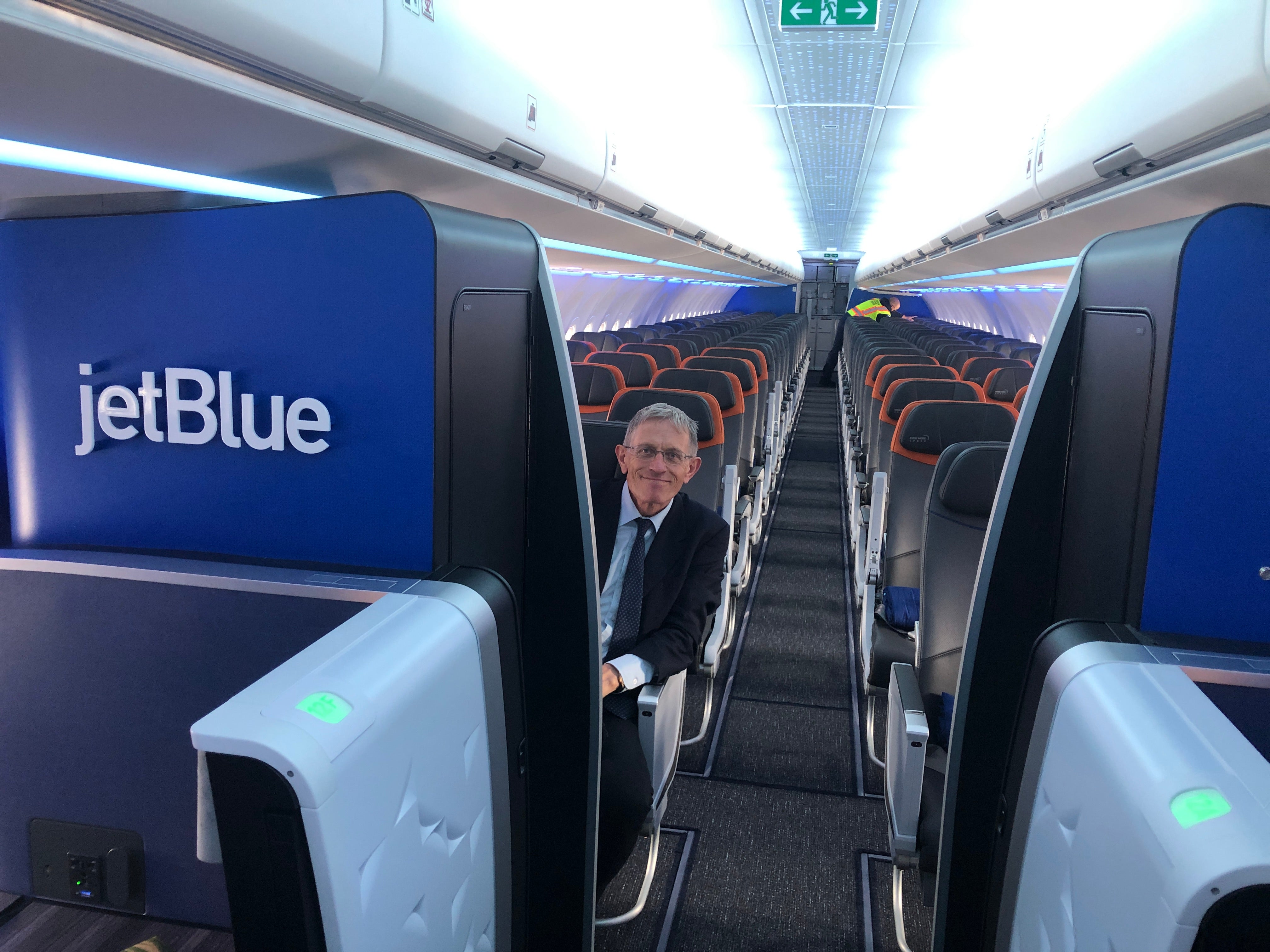In praise of daytime transatlantic flights on smaller planes
Plane Talk: Could a brave airline offer a real low-cost transatlantic connection?

Your support helps us to tell the story
From reproductive rights to climate change to Big Tech, The Independent is on the ground when the story is developing. Whether it's investigating the financials of Elon Musk's pro-Trump PAC or producing our latest documentary, 'The A Word', which shines a light on the American women fighting for reproductive rights, we know how important it is to parse out the facts from the messaging.
At such a critical moment in US history, we need reporters on the ground. Your donation allows us to keep sending journalists to speak to both sides of the story.
The Independent is trusted by Americans across the entire political spectrum. And unlike many other quality news outlets, we choose not to lock Americans out of our reporting and analysis with paywalls. We believe quality journalism should be available to everyone, paid for by those who can afford it.
Your support makes all the difference.When, in the 1960s, the Boeing 737 was first conceived, its designers surely could not imagine the compact twin-jet would routinely be shuttling across the North Atlantic. But here I am aboard a transatlantic flight from Halifax in Nova Scotia to London Heathrow. The Air CanadaBoeing 737 Max is perfectly comfortable for a flight scheduled to take six hours – because this is a daytime departure and I will not be trying to sleep in the uncomfortable confines of an economy class seat.
I like narrow-bodied planes across the Atlantic. They feel more intimate – and have the additional benefit of being much faster to board and disembark. With fewer passengers, the chances of getting something to eat and drink before you reach the coast of Greenland are increased. And, if a window seat matters to you, one in three passengers in economy has access to a view compared with just one in five on a 10-abreast Boeing 777.
A view is all the more important if there is something to see. Almost all eastbound transatlantic flights are overnight. But on Air Canada’s summer schedule between Halifax and London, the whole flight is in daylight.
Departure was slightly delayed beyond 11am Atlantic time (3pm in the UK). But the pilots are catching up and expect to land at Heathrow ahead of schedule at 8.30pm. Unlike the morning rush of arrivals, the UK’s busiest airport is relatively calm in mid-evening. So you can expect to avoid the near-mandatory hold facing arrivals from across the Atlantic, when many planes fly around in circles over Ockham in Surrey, waiting for a slot to land.
With luck I will be home in bed by 11pm – corresponding to 6pm at the key East Coast airports, when the sequence of overnight departures to London typically begins. Instead of a red-eye, I intend to get some proper shut-eye and be in reasonable shape to resume what I loosely call work in the morning.
The fare for this 2,857-mile flight was a very reasonable £226, which includes a meal and (should I want some) a couple of alcoholic drinks. My westbound flight was aboard the same airport type, but from Dublin – increasingly the hub of choice for many British travellers because it avoids Air Passenger Duty.
Including the flight from London to the Irish capital and the onward transatlantic sector on WestJet of Canada, the fare was £255. A return trip to North America for under £500 in peak summer is most reasonable.
For a one-way New York JFK to London Heathrow flight on JetBlue in April, I paid significantly more: £360. But JetBlue offers a premium experience on its narrow-bodied Airbus A321s that connect New York (and Boston) with the UK. You get free, fast WiFi and better-than-usual-economy food and drink. And the Airbus cabin is 17cm (seven inches) wider than the Boeing: a small but significant difference on a transatlantic flight.
Since narrow-bodied planes have fewer seats to fill, it appears that airlines with suitable equipment are more likely to offer an eastbound daylight flight across the Atlantic.
You can also make a daytime flight from Toronto to London – because that is what the Air Canada crew do. Rather than starting work at Halifax, they begin their shift with a domestic flight from Toronto to the Nova Scotia capital. The same crew and plane operate the Halifax-Heathrow flight, then overnight in London.
I wonder: is any airline going to try a there-and-back across the Atlantic? The standard short-haul model for budget airlines is that the crew return to sleep in their own beds. By doing this, the cost of the operation is drastically reduced.
If easyJet can fly from Glasgow and Hurghada in Egypt and back in a day – threading a path through the crowded and storm-prone European skies – surely it could navigate the clearer horizons of the North Atlantic from Glasgow to Halifax? The journey is 100 miles shorter than to the Red Sea resort.
The schedule could appeal, too, allowing flying out and coming home at civilised times. A 9am departure from Glasgow would touch down at about 11am local time in Halifax. With an hour’s turnaround, arrival back in Scotland around 9pm will certainly appeal.
There is a gap in the market – but is there a market in the gap? Only if transatlantic travellers start demanding more civilised flying.
Join our commenting forum
Join thought-provoking conversations, follow other Independent readers and see their replies
Comments